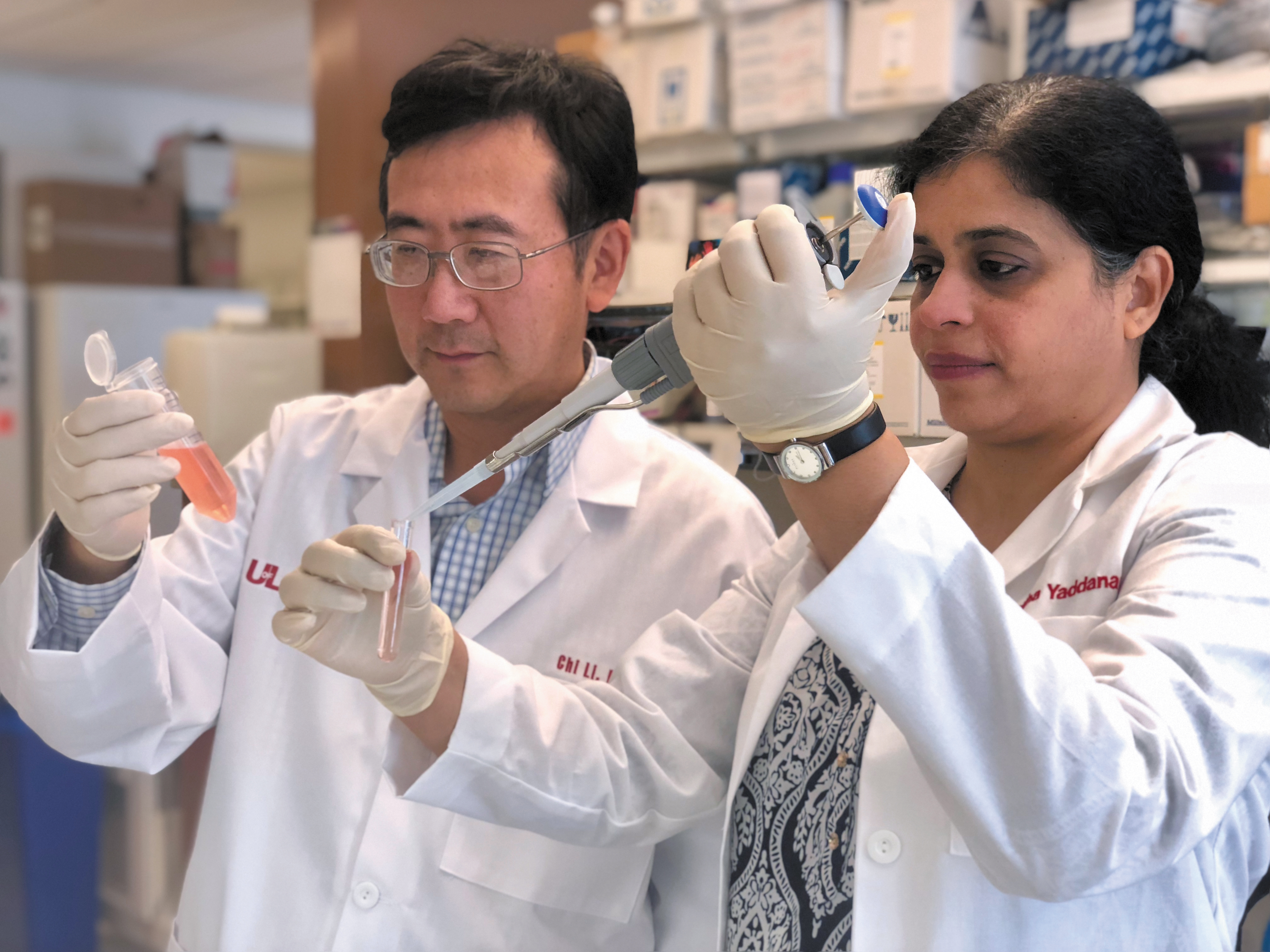UofL faculty are making headway in the fight against cancer, particularly in conquering the disease before it even occurs.
Two research teams have made recent discoveries related to cancer prevention, and both are seeing success in early animal trials.
Testing a vaccine
Two UofL researchers developed a stable and scalable vaccine that is proving effective at preventing certain cancerous tumor growth in mice. So far, the researchers have tested the
vaccine against lung cancer and melanoma, and 80 to 100 percent of the vaccinated mice used in each trial were cancer free when compared with the nonvaccinated control group.
Prevention of tumor growth is key because, while conventional treatments and therapies may kill most of the cancer, a small percentage of cells are resistant. Those are cancer stem cells, which have the ability to reproduce and sustain the cancer.
“Those cells sit there, and they have the capability of regrowing the entire tumor by themselves,” said assistant professor of medicine Kavitha Yaddanapudi, co-inventor of the vaccine.
A vaccine, on the other hand, can help the body build immunity to cancer before it develops.
The vaccine they developed has been through several iterations. The team has reworked and streamlined it, giving it a longer shelf life and more stability, and making it easy to create in large quantities.
“We tried to simplify, simplify, simplify,” said Chi Li, co-inventor and associate professor of medicine.
The research team, which received grant funding from the National Institutes of Health, hopes to develop the vaccine to be effective against all cancer types and to test the vaccine in human trials.
The group also has collaborated with the UofL Commercialization EPI-Center to protect and commercialize the intellectual property.
“It has been a pleasure to work with this outstanding team of researchers from their initial discovery through its current development,” said Allen Morris, the center’s director. “Their new technology has the potential to dramatically advance the field of cancer immunization.”
A tumor immune surveillance system
Another research team has discovered an immune stimulator molecule that, administered by itself, protects against the future development of multiple types of cancer.
Previously, in pre-clinical animal testing, the recombinant protein molecule, SA-4-1BBL, enhanced the efficacy of cancer vaccines by boosting the effectiveness of adaptive immune cells trained to target a cancerous tumor for destruction. However, when the researchers treated normal, healthy mice with SA-4-1BBL alone, they were protected when later exposed to different types of tumor cells.
“The novelty we are reporting is the ability of this molecule to generate an immune response that patrols the body for the presence of rare tumor cells and to eliminate cancer before it takes hold in the body,” said Haval Shirwan, professor of microbiology and immunology. “Generally, the immune system will need to be exposed to the tumor, recognize the tumor as dangerous, and then generate an adaptive tumor-specific response to eliminate the tumor that is recognizes. Thus, our new finding is very surprising because the immune system has not seen a tumor, so the response is not to the presence of a tumor.”
Shirwan and Esma Yolcu, associate professor and co-author of the study, determined the molecule generates a tumor immune surveillance system that activates cells to protect the mice against various cancer types they have never had.
In the research, mice that had never had cancer were treated with SA-4-1BBL alone, then cervical and lung cancer tumor cells were introduced at various time intervals. The mice showed significant protection against tumor development, with the cancer immunoprevention effect lasting more than eight weeks. The research was published in the journal “Cancer Research.”
Although the research, which was conducted in collaboration with FasCure Therapeutics LLC, tested the mice for cervical and lung cancers, the protective function of SA-4-1BBL has the potential to be effective in preventing any number of tumor types.
See more from Shirwan and Yolcu.





























